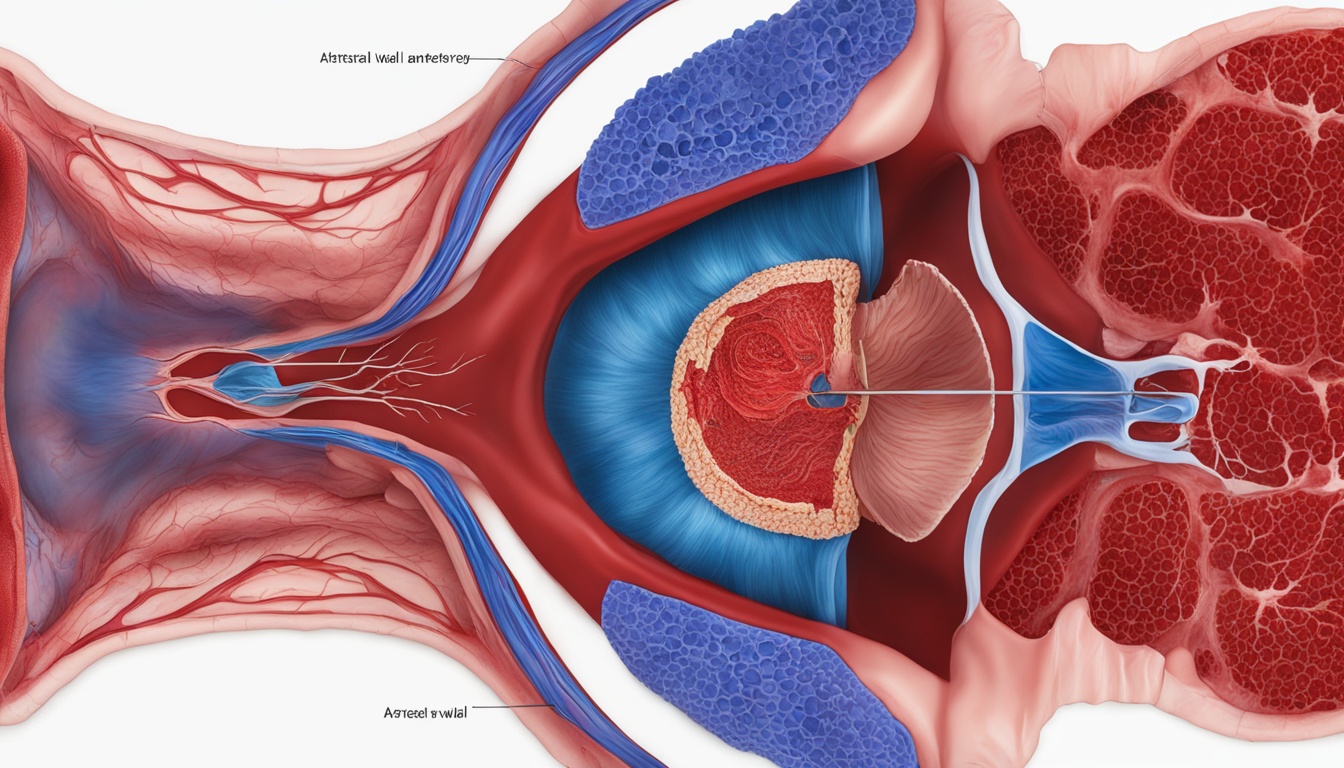A dissecting aneurysm happens when an artery’s wall gets a tear, letting blood flow into its layers. This can weaken the artery and cause a serious risk of rupture. These issues can occur in different parts of the body, such as the brain, aorta, and heart.
The signs of a dissecting aneurysm differ depending on where it is. You might feel out of breath, have chest or back pain, or experience symptoms similar to a stroke. Some things that make these aneurysms more likely include hardening of the arteries, high blood pressure, and smoking.
Doctors use imaging tests like ultrasound to spot a dissecting aneurysm. After finding it, treatment options are considered. These may involve using drugs to manage blood pressure, having surgery, or choosing less invasive procedures.
Stem cell therapy is showing potential as a treatment for dissecting aneurysms. The idea is to use stem cells to strengthen the artery walls. This could prevent a rupture or help with healing after a procedure.
Key Takeaways:
- Dissecting aneurysms occur when the layers of an artery’s wall separate or tear.
- Symptoms vary depending on the location and can include chest pain, shortness of breath, and stroke-like symptoms.
- Contributing risk factors include atherosclerosis, high blood pressure, smoking, congenital abnormalities, and certain inherited diseases.
- Diagnosis involves imaging studies to visualize the aneurysm.
- Treatment options depend on factors like size, location, and overall health.
- Medication, surgery, or minimally invasive procedures can be used to manage dissecting aneurysms.
- Stem cell therapy shows promise for repairing and strengthening arterial walls.
Causes and Risk Factors of Dissecting Aneurysm
Dissecting aneurysms happen when artery walls get weak. One big cause is atherosclerosis. This happens when fatty plaque builds up in arteries. It blocks blood flow and damages artery walls. As plaque grows, arteries weaken and can tear.
High blood pressure and smoking are also big risks for aneurysms. High blood pressure strains arteries. This strain, over time, weakens them. Smoking hurts how blood vessel linings work. It makes atherosclerosis worse.
Some people are born with traits that raise their aneurysm risk. These traits affect artery wall strength. So, some people may be more likely to have an aneurysm.
Aneurysms are also linked to certain diseases. Marfan syndrome and Loeys-Dietz syndrome are two. They affect how our body’s connective tissues work, including our blood vessels. This makes artery walls weaker and an aneurysm more likely.
Some genes also play a role in aortic aneurysms. Knowing about these genes helps doctors. They can check your risk and plan the best care for you.
Summary:
The causes of dissecting aneurysms include several known factors. These include atherosclerosis, high blood pressure, and smoking. Some are born with conditions that make aneurysms more likely. Also, certain illnesses can weaken artery walls. So, it’s important to know these risks and take steps to prevent aneurysms.
Diagnosis and Treatment of Dissecting Aneurysm
Doctors diagnose a dissecting aneurysm through a mix of exams and medical history. They also use different tests like ultrasound, echocardiography, and more to find the aneurysm. This helps them see the condition of arteries and plan treatment.
For treatment, doctors look at the aneurysm’s size, where it is, and the patient’s health. They might give medicine like beta-blockers to lower blood pressure and decrease stress on the arteries. Surgery could be needed for severe cases.
New studies are looking into using stem cell therapy for dissecting aneurysms. Stem cells can repair damaged tissues. But, there’s still more to learn about how well this treatment works.

